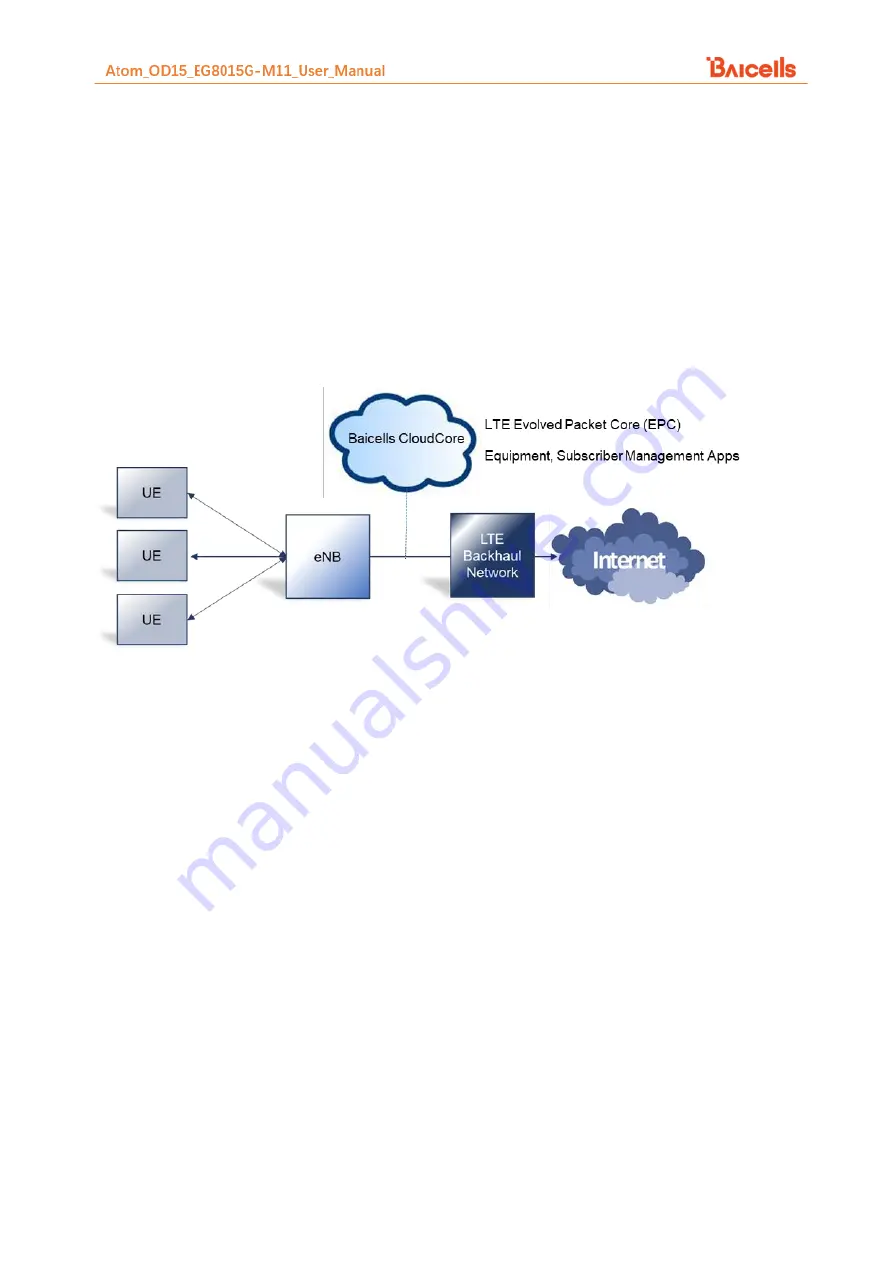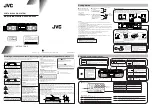
5
1. Introduction
1.1. Description
The Baicells Atom OD15 Outdoor Low-Gain and Outdoor High-Gain User Equipment (UE) is part of a
broadband wireless access system that integrates with Long-Term Evolution (LTE) backhaul networks to
provide subscribers with Internet access. The UE, also referred to as Customer Premise Equipment (CPE),
communicates through a wireless connection to the operator’s eNodeB’s (eNB) at cell sites located in the
region. The eNBs communicate with the backhaul network (
错误
!
未找到引用源。
).
Figure 1: LTE Network Architecture
The outdoor low-gain or high-gain UE may be selected because of the distance between the user's location
and the closest eNB or for environments where there may be blockage or partial blockage in the wireless
signal path between the UE and eNBs in the area - e.g., dense trees or buildings.
As an LTE standards-based product, the Baicells equipment provides higher near-line-of-sight (nLOS) and
non-line-of-sight (NLOS) signal penetration than other wireless technologies. The high-gain UE has a higher
antenna gain than the low-gain UE, making it possible to get the strongest possible signal reception for
subscribers.
The LTE standards organization that defines certain characteristics of user equipment across manufacturers
labels each progression of the standards as releases, such as Release 9, Release 10, etc., and categories,
such as Category 4 (CAT4) and Category 6/7 (CAT6/7).
Typically the difference from one release/category to the next is in capacity, i.e., higher throughput. There
is no physical difference between the CAT4 and CAT6/7 UE, but the low-gain UE and the high-gain UE do
look different from one another. A physical comparison is provided in section 4.
1.2. ODU Modes
This device can work at two modes, ODU standalone or IDU+ODU mode.
(1)
ODU standalone Mode
Standalone mode, ODU can worked at NAT/TUNNEL/BRIDGE mode






































